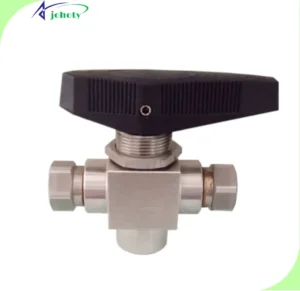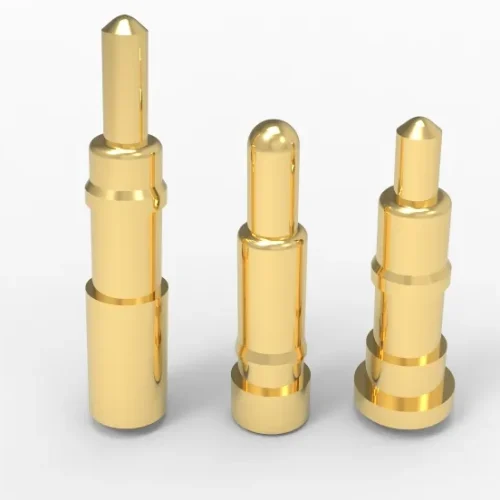Gas valves are crucial components that regulate gas flow, ensuring safety and efficiency in various applications. These valves are pivotal in controlling natural gas supply, from residential heating systems to automobiles.
It is critical in many systems and appliances, including grills, water heaters, stoves, ovens, boilers, and furnaces.
This article will explore the world of gas valves, their functions, applications, and the importance of proper installation and replacement.

What is a Gas Valve?
A mechanical device controls gas flow such as natural gas, petroleum, sour, and Oxygen through a pipeline to power various things.
In fact, this component functions as a gateway, enabling the flow of gas as needed and shutting it off when it’s not necessary. It also regulates and adjusts the amount and pressure of fluid.

This control mechanism is essential to prevent leaks, ensure safety, and maintain efficient operations in gas-powered systems.
With time, various valves have been introduced and improved to meet the requirements and specific needs of the environment and appliances.
A typical gas valve consists of several key components:
| Component | Description |
| Valve Body | The main housing of the valve that contains the control mechanism. |
| Inlet and Outlet Ports: | The points where gas enters and exits the valve. |
| Actuator | A part that opens or closes the valve. Manual handle, electric motor, or solenoid. |
| Disc or Plug | The movable part blocks or allows gas flow through the valve. |
| The stem | connects the actuator to the disc to open or shut the valve.
|
Types of Gas Valves
Various valves control the gas flow depending on the specific application and requirements. One must clearly understand the various types and applications involved for the best results in the oil and gas industries. Some common types of natural gas valves include:
- Globe Valves
- Ball Valves
- Gate Valves
- Butterfly Valves
- Needle Valves
- Solenoid Valves
- Diaphragm Valves
- Slam-shut Valves,
- Plug Valves.
How Gas Valves Work
Natural Gas valves in the gas industry are essential in stabilizing energy resources efficiently.
A valve can be opened or closed through various mechanisms, including levers, pistons, or electric solenoids. The chosen mechanism moves a valve gate or ball to regulate gas flow.
The specific way it works depends on the type of valve or the device. For instance, a gate valve moves a gate up or down.
Similarly, a butterfly valve operates exclusively in a single direction.
In contrast, a diaphragm valve employs a closure element to separate the flow of gases effectively.
Moreover, these valves prioritize safety, using smart sensors to prevent pressure issues and control flames. Whether automatic or manual, these valves ensure energy travels smoothly while following industry rules, keeping our resources in good hands.
Choosing the Right Valve
When choosing a gas valve, there are several factors to consider, including:
- The type of gas
- The pressure of the gas
- Flow rate of the gas
- The temperature of the gas
- Environment
- The safety requirements
For example, if you are using it, you will need a valve designed for natural gas. When utilizing propane, it is crucial to use a valve that has been specifically created for propane.
Further, It’s also important to consider the gas pressure you’re using when selecting a valve. Using high-pressure gas requires a valve with a high-pressure rating.
Similarly, the flow rate of the gas also matters. If you need to control a high gas flow rate, you will need a valve designed for high flow rates.
Application of Gas Valves
Gas valves are pivotal in various settings. Not only do they ensure the security and comfort of our homes, but they also play a crucial role in commercial and industrial environments, for example,
- Power Generation
- Petroleum
- Mining
- Agriculture,
- Medical Equipment,
- Irrigation,
- Food Processing, control, and services
- Automotive
- Fire service
- Aerospace
- Construction
- Pulp and Paper
- Commercial
- Home Appliances
How to Install a Gas Valve
Gas valves, like any mechanical component, can wear out over time. Installing or replacing a gas valve is a crucial task that demands the utmost attention to safety and precision.
Signs that a gas valve may need replacement include leaks, difficulty in turning the valve, or irregularities in gas flow. Several steps are involved when replacing a gas valve:
- Before attempting any replacement, shutting off the gas supply to the valve is essential to prevent accidents.
- Carefully disconnect the gas line from the old valve, ensuring no gas escaping.
- Unscrew or detach the old valve from its attachment.
- Attach and secure the new valve to the appropriate mounting point.
- Make sure to securely connect the gas line to the new valve to prevent any leaks.
- Conduct a thorough leak test after replacement to ensure the new valve is functioning correctly, and there are no gas leaks.
Conclusion
Gas valves are an important part of many systems and appliances. These valves are crucial for protection as well as performance.
Understanding how it works and choosing the right valve for the application can help ensure your gas-powered equipment’s safe and reliable operation.
However, when acquiring the best gas valves, Johoty is a reliable partner, providing high-quality solutions for all your needs.
FAQs
Which Natural Valve Is Best?
Ball Valves are ideal for natural gas applications due to their durability and tight shut-off capabilities. These valves are highly effective for high-pressure applications and require minimal maintenance. Compared to other valves, these are also less expensive and more affordable.
Do gas valves have AC or DC power?
Electrical signals usually operate Gas valves specifically designed for natural Gas. Depending on the control system’s design and the valve’s specific needs, gas valves can be either AC or DC. Gas valves typically operate at 120 or 230 volts AC or 12 or 24 volts DC.
Where Is The Valve For The Gas Located?
Gas valve locations vary depending on the type of gas system and the situation.
The house-side valve is located inside your home, near where the gas line enters the house. It shuts off the gas to individual appliances or gas lines.
In Contrast, the street-side valve is outside your home, near the gas meter. It is used to shut off the gas to your entire home.











